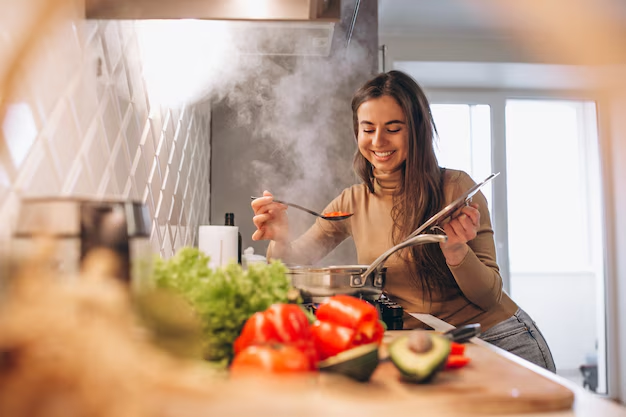Baking pastries can be an art form, combining science and creativity to produce delicious, flaky, and golden results. Whether you’re a beginner or an experienced baker, there are some key tips and tricks that can help you achieve perfect pastries every time. From understanding ingredients to mastering technique, here’s a comprehensive guide to ensure your pastries turn out beautifully.
1. Understand the Basics of Pastry Dough
Pastry dough is the foundation of many baked goods like croissants, tarts, and Danish pastries. There are several types of pastry dough, but the two most common are:
- Puff Pastry: Made by layering butter and dough, which is folded multiple times to create thin, flaky layers. Puff pastry rises beautifully when baked, creating a light, crispy texture.
- Shortcrust Pastry: This is a crumbly, buttery dough often used for tarts, pies, and quiches. It’s typically made with flour, butter, sugar, and a bit of water, and the key is not to overwork the dough to prevent it from becoming tough.
Pro Tip: Always chill your dough before baking. This helps the fat solidify and the dough relax, preventing shrinking and ensuring a crisp, flaky texture.
2. Use Cold Ingredients
For pastries to develop that perfect, flaky texture, the fat needs to stay cold. Cold butter and cold water help create those delicate layers that make pastries so delicious. If the fat gets too warm during mixing, it will be absorbed into the flour, resulting in dense, greasy pastries.
Tip: When making puff or shortcrust pastry, use butter straight from the fridge and ice-cold water to keep everything cool. For puff pastry, it’s helpful to chill the dough between each fold to maintain the flakiness.
3. Don’t Overwork the Dough
Overworking pastry dough can lead to tough, hard pastries. When you handle the dough, you want to mix it just enough to combine the ingredients. Over-kneading activates the gluten in the flour, which will make the pastry chewy rather than tender and flaky.
Tip: When mixing dough, use your fingers or a pastry cutter to incorporate the butter into the flour until it resembles coarse crumbs. Then, gently combine the dough with a small amount of cold water, just enough to bring it together.
4. Rest the Dough
After mixing and before rolling out the dough, let it rest in the refrigerator for at least 30 minutes. This gives the gluten a chance to relax and reduces the chance of the dough shrinking during baking.
Pro Tip: If you’re making puff pastry, allow it to rest after each fold. This ensures the dough stays firm and results in better layers when baked.
5. Roll the Dough Evenly
When rolling out pastry dough, try to keep the thickness consistent throughout. Uneven dough can lead to uneven baking, with some parts of your pastry overcooked and others undercooked.
Tip: Use a rolling pin with rings on the sides (or place dowels next to your dough) to ensure an even thickness. Aim for about 1/8 to 1/4 inch thickness, depending on the type of pastry you’re making.
6. Don’t Skip the Chilling Time
Chilling is one of the most important steps in pastry making. After rolling the dough, especially for pies or tarts, place it back in the fridge for at least 30 minutes before baking. This helps the dough firm up, preventing it from shrinking in the oven.
Pro Tip: For pie crusts, after you’ve lined your pan with the dough, place it in the fridge (or freezer) to chill before filling it. If you’re blind baking (baking without filling), chilling the crust helps it keep its shape.
7. Blind Baking for Perfect Crusts
Blind baking is a technique where you bake an empty pastry shell before adding the filling. This is particularly important for tarts, pies, or quiches with liquid fillings, as it prevents the base from becoming soggy.
Tip: Line your pie or tart shell with parchment paper and fill it with pie weights or dried beans before baking. This keeps the crust from puffing up or shrinking. Bake it for 10-15 minutes at a moderate temperature (around 375°F or 190°C) until the edges are lightly golden. Remove the paper and weights, then continue baking until the base is fully cooked.
8. Get Creative with Fillings
The filling is where you can really get creative with your pastries. Sweet or savory fillings can be made using fruit, chocolate, custard, cheese, or meats. Here are a few ideas for fillings:
- Sweet Fillings: Pastry cream, lemon curd, fresh berries, chocolate ganache, or almond cream.
- Savory Fillings: Spinach and feta, mushrooms and garlic, ham and cheese, or smoked salmon and cream cheese.
Pro Tip: When adding fillings, be sure not to overfill your pastries. This can lead to spillage during baking and affect the texture of your pastry.
9. Perfecting the Bake
The temperature of your oven and the type of pastry you are baking will greatly influence the final result. Most pastries require a hot oven to achieve that golden, crispy texture.
- Hot Oven: Puff pastry, for example, bakes best at a high temperature (around 400°F or 200°C) to ensure that the layers of butter puff up and become crispy.
- Moderate Oven: For shortcrust pastries or more delicate pastries like Danish, a moderate temperature of around 375°F (190°C) works best.
Tip: Always preheat your oven before placing your pastries inside. A properly heated oven helps the pastry rise quickly, ensuring a crisp texture.
10. Brush for Shine and Crispiness
For an attractive finish and extra crispness, consider brushing your pastries with an egg wash (a mixture of beaten egg and water) before baking. This adds a beautiful golden color to the pastry and helps create a crisp, flaky exterior.
Pro Tip: For a shiny, golden finish, you can also brush your pastries with a simple syrup or glaze once they’ve cooled. This works especially well for sweet pastries like fruit tarts and Danish.
11. Let Your Pastries Cool
After removing your pastries from the oven, let them cool on a wire rack. This helps the steam escape and prevents the pastry from becoming soggy. If you don’t let your pastries cool properly, the filling can become runny or the pastry itself can lose its crisp texture.
Tip: For puff pastry, allow it to cool completely before slicing, as this gives the layers time to set and prevents them from collapsing.
12. Troubleshooting Common Pastry Problems
Even experienced bakers face a few challenges along the way. Here are some common issues and how to fix them:
- Soggy Pastry: This is often caused by too much moisture in the filling or under-baking the base. Make sure your filling isn’t too wet, and consider blind baking the crust for a few minutes before adding the filling.
- Tough Pastry: This usually happens when the dough is overworked. Remember to handle the dough gently and only mix until the ingredients are just combined.
- Shrunken Pastry: Dough that is too warm or not rested enough can shrink during baking. Chill the dough thoroughly and avoid handling it too much.
Conclusion
Baking pastries is both a science and an art, and with the right techniques, you can master the art of creating perfect pastries at home. By using cold ingredients, not overworking the dough, and following key baking tips, you’ll be well on your way to producing flaky, golden, and delicious pastries every time. Whether you’re making simple tarts, croissants, or intricate Danish pastries, practice and patience are key. Enjoy the process and the delightful results!




